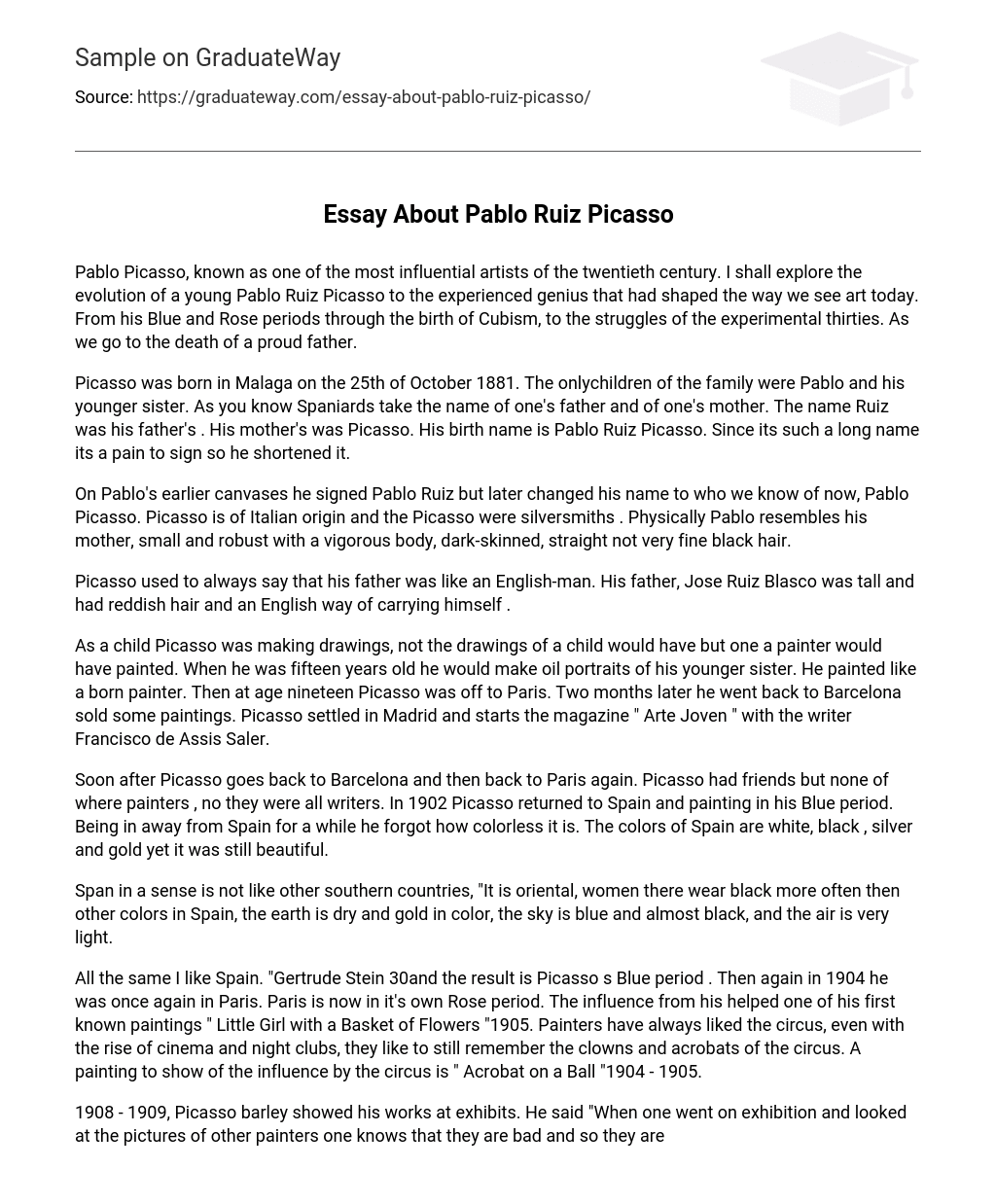Pablo Picasso is widely recognized as an exceptionally influential artist of the twentieth century. This study follows the evolution of a young Pablo Ruiz Picasso into the visionary who transformed our understanding of art. We begin with his Blue and Rose periods, progress through the emergence of Cubism, and navigate the obstacles encountered during the experimental thirties, embarking on a voyage that ultimately guides us to the pinnacle of an extraordinary career.
Pablo Ruiz Picasso, born on October 25, 1881 in Malaga, had a younger sister. In Spain, it is customary to use both the father’s and mother’s surnames. Therefore, his father’s surname was Ruiz and his mother’s surname was Picasso. As a result, he adopted the name Pablo Ruiz Picasso at birth. However, due to its length, he chose to abbreviate it for convenience when signing.
Pablo Picasso, originally named Pablo Ruiz, adopted a new name for his later works. He comes from a lineage of Italian silversmiths. In terms of appearance, he takes after his mother and has a solid and sturdy build with a strong physique. He has a dark complexion and straight black hair that is not very thin.
Picasso frequently compared his father, Jose Ruiz Blasco, to an Englishman due to his tall height, reddish hair, and overall temperament.
Picasso’s artistic abilities as a child were remarkable and surpassed those of his peers. His talent resembled that of a professional painter rather than a child. At the young age of fifteen, he was already capable of creating oil portraits of his younger sister. Picasso’s innate painting talent was evident from an early age. When he turned nineteen, he ventured to Paris but quickly returned to Barcelona after two months to sell some paintings. Madrid eventually became Picasso’s home where he collaborated with writer Francisco de Assis Saler in establishing the magazine “Arte Joven.”
Shortly after, Picasso returns to Barcelona and then returns to Paris once again. Picasso had friends, but none of them were painters – they were all writers. In 1902, Picasso returns to Spain and starts painting during his Blue period. After being away from Spain for some time, he forgets how colorless it is. The colors of Spain consist of white, black, silver, and gold, yet it remains beautiful.
Span is unique compared to other southern countries. It has an oriental feel, with women frequently wearing black. The landscape is characterized by dry and golden earth, a deep blue almost black sky, and a light air.
Spain is a country that I like. Gertrude Stein 30and the result is Picasso’s Blue period. In 1904, he returned to Paris and influenced his Rose period. The influence of the circus can be seen in his painting “Acrobat on a Ball” from 1904 – 1905. Despite the emergence of cinema and nightclubs, painters still appreciate and remember the clowns and acrobats of the circus. One of Picasso’s earliest known paintings, “Little Girl with a Basket of Flowers”, created in 1905, reflects this influence.
In 1908 – 1909, Picasso barely exhibited his works, stating that when he saw the paintings of other artists, he knew they were not completely hopeless, but still not good. His initial cubist artworks were landscapes, but he quickly began to use this style to depict people. However, Picasso did not fully explore the potential of cubism until later. Between 1910 and 1912, his focus shifted to still life. During this time, Picasso’s paintings became more vibrant in color. Unfortunately, the outbreak of war in 1914 interrupted his artistic progression.
During the years 1917-1920, Picasso entered a realistic period. However, it was during the Spanish civil war that Picasso was awakened and created his most famous work of art, “Guernica”. The aftermath of the wars allowed Picasso to channel the sadness and pain caused by the death of his Spanish people into his paintings. Many of his later works were done in ink.





